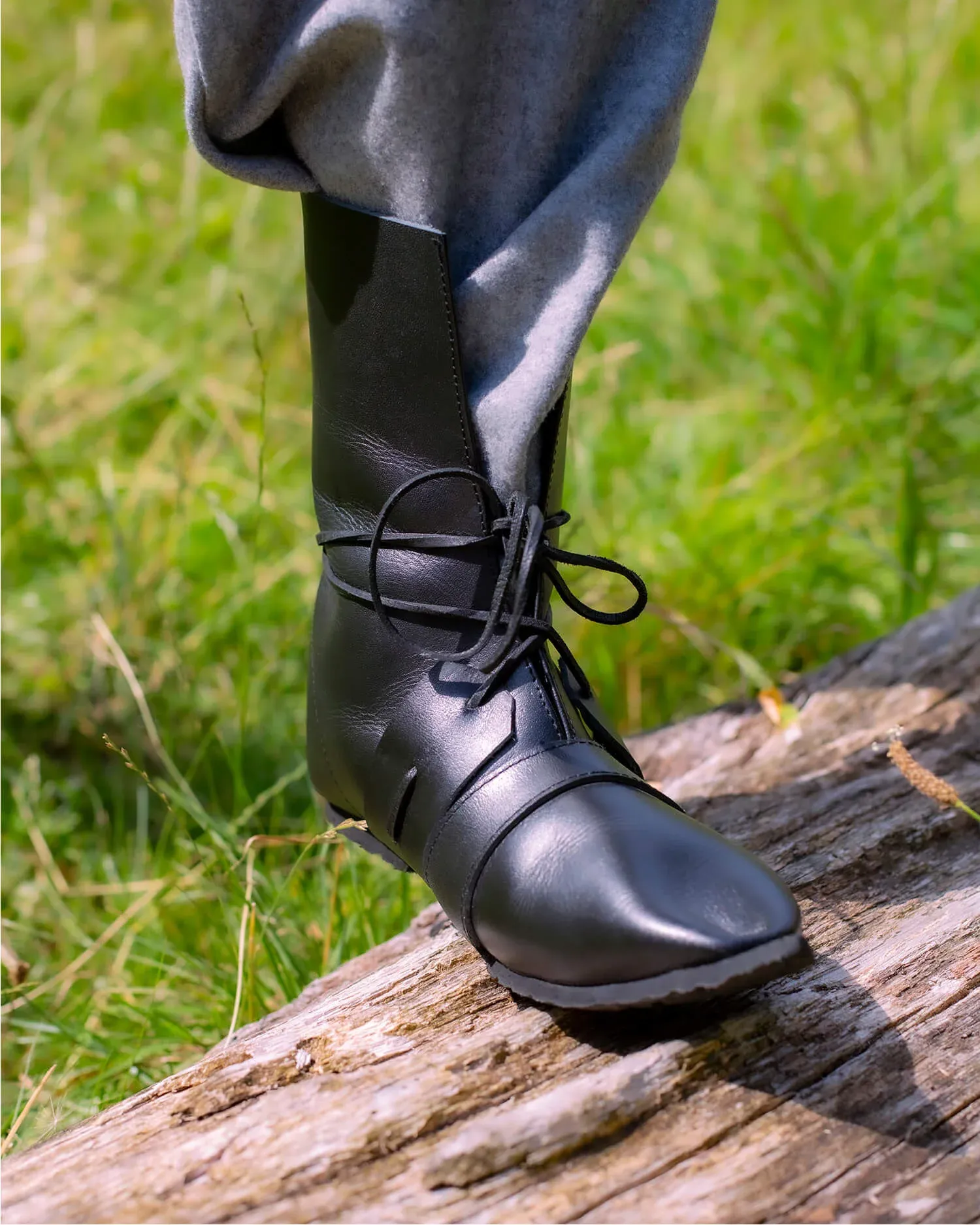What is a Zabata?
Footwear throughout history has played a fundamental role not only in fashion but also as a cultural and social symbol. Within this rich history, we find the zabata, a type of medieval footwear that stands out for its distinctive design and the materials used in its manufacture. Below, we will explore in detail the zabatas, analyzing their origins, characteristics, social use, and historical importance.

Origin and Etymology
The term zabata has its roots in the Turkish "zabata", which describes tanned or cured bovine leather, a key material in the making of this type of footwear. Documented for the first time in the 11th century, the use of the word spread until the early 16th century, especially in the context of women's shoes. This etymology offers us a glimpse into the techniques and materials used in the past for shoe manufacturing.
Characteristics
- Materials: Leather was the primary material, although it was occasionally lined with fabric such as silk, allowing for aesthetic and decorative variety.
- Design: They were commonly designed as fitted boots that enveloped the foot and ankle. There were also more elaborate versions with scooped or perforated designs.
- Construction: Strips, or pieces of fabric and leather, were used to reinforce the footwear. These were sewn between the sole and the upper and often ran along the instep or the sides.
Social Use
During the medieval period, footwear was a direct reflection of social class. Members of the nobility and upper classes often wore sophisticated leather footwear, usually covered with expensive fabrics such as silk, while the lower classes settled for simpler materials like wooden clogs. The zabatas not only served a functional purpose but were also indicators of social status.
While many designs offered an ornamental appearance, the primary concern was functionality, ensuring that the shoes were suitable for the daily demands of life at that time.
Historical Examples
- Documentation: In Castilian writings from 978, the term "zapatones aut abarcas" is already mentioned, and in the famous Cantar del Mío Cid (1140), "çapato" is used, showing the widespread use of the word in medieval texts.
- Iconography: Frescoes from the 6th century, such as those in Santa María de Tarrasa in Barcelona, depict shoes that possibly resembled zabatas, providing visual evidence of their design and use.
The zabatas are a key piece in the history of medieval footwear, representing not only the material resources and craftsmanship of the time but also the social and cultural context in which they existed. Their legacy in fashion and functionality is a testament to human ingenuity in adapting natural materials for everyday needs and aesthetic aspirations.
















